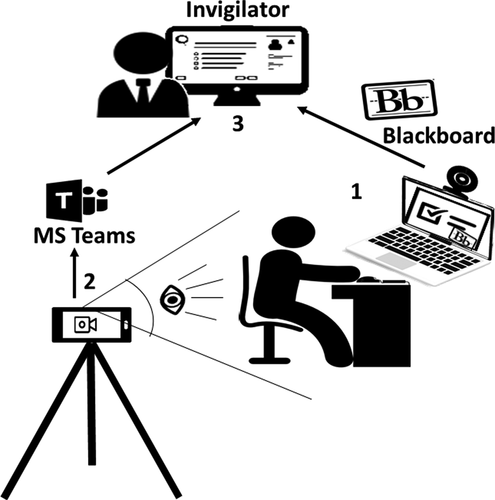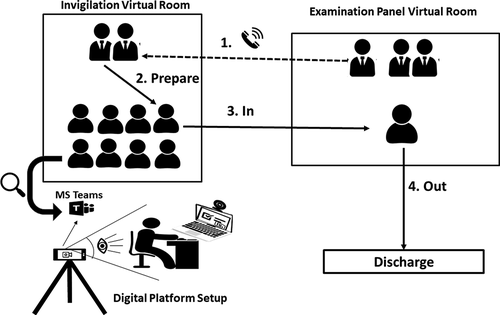Figures & data
Figure 1. Online exam setup for the written parts of the examination (Modified Essay, Multiple-Choice and Objective Structured Clinical Examination Questions). 1: student performing online exam using Blackboard; 2: introducing invigilation method through using Microsoft Teams on mobile device (during the exam), and 3: completion of the invigilation process by reviewing the feedback from blackboard (following the exam).

Figure 2. Online exam setup for the oral examination using Microsoft Teams. 1, 2, 3, and 4 sequence of events of admitting and discharging students during the online oral examination.

Table 1. Mean satisfaction scores and standard deviation (SD) for participants’ gender and age group for the online assessment evaluation scales.
Table 2. Percentages for responses to items for the students’ online assessment Scale.
Table 3. Percentages for responses to items for the faculty members online assessment Scale.
Table 4. Thematic analysis of students’ responses to the open-ended questions.
Table 5. Thematic analysis of faculty members’ responses to the open-ended questions.
